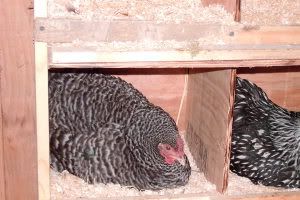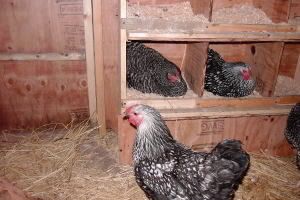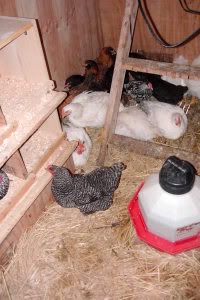Chickens and Ducks Getting Busy
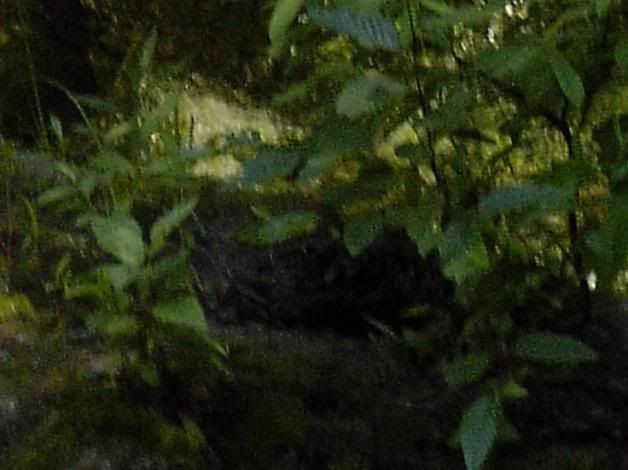
I came out a little later to see the eggs, but I couldn't. They were obscured by a mama duck. Unfortunately while I could see her, my camera could not. Isn't it kind of sad for this duck that of the two of us, I am far more likely to wade into the creek and eat either the duck or her eggs than my camera.

And here is the papa duck, about ten yards up the creek keeping watch, even though it's sort of unlikely that danger is going to come slogging upstream. Well, nobody accused ducks of being smart.
Well, on the chicken side of the fence (I had to turn an entire 180 degrees for these pictures), we have yet another extraneous rooster. He was the "free rare chick" that they include with every batch.
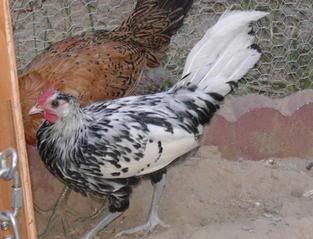
Our guess is that he's a Silver Duckwing Old English Game bird. Check the description - they make him sound like a Jack Russel terrier. And he's totally living up to that description. He's a jaunty little guy - scrappy, even. He's a good deal smaller than the other chickens, but has no problem taking them on, jumping up and puffing out his neck feathers. It's cute now, but "cute" won't last.
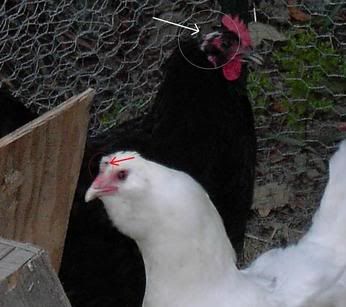
And last - here's how to tell the popular girls. Poor Sarah (the white one) and Black Lucy (the other one). As you can see (following the white arrow), most of the feathers have been pecked off poor Black Lucy's head. And on Sarah (follow the red arrow) her comb is scabby. Well, all this says to me is that Cargill goes for personality, not looks.
Good gracious!


